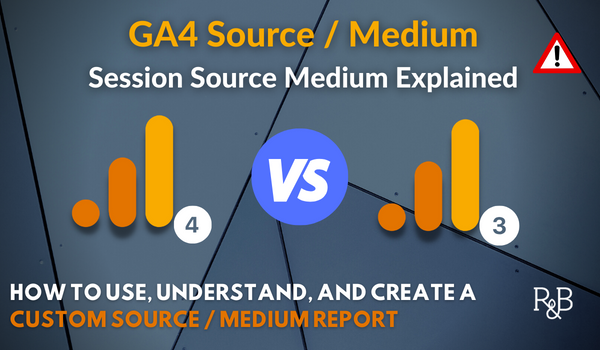Necessary Guide to Secondary Dimensions in Google Analytics: Interpretation, Benefits, and Applications
Necessary Guide to Secondary Dimensions in Google Analytics: Interpretation, Benefits, and Applications
Blog Article
Introducing the Influence of Secondary Dimension in Google Analytics on Data Evaluation and Insights
In the world of information analytics, the application of secondary measurements within Google Analytics has actually emerged as an essential tool for extracting much deeper insights and unraveling complex patterns that might otherwise stay covered. By peeling off back the layers of key information collections, additional measurements supply a nuanced perspective that improves the understanding of customer habits, website efficiency, and the efficiency of marketing approaches.
Exploring the Principle of Secondary Measurements
Second dimensions in Google Analytics supply extra understandings by enabling individuals to evaluate key information in conjunction with a secondary characteristic. By integrating additional measurements, customers can dig deeper into the data and discover useful correlations that might otherwise go unnoticed - what is a secondary dimension in google analytics.
By discovering the different second measurements offered in Google Analytics, customers can unlock new insights and optimize their electronic advertising initiatives. In essence, additional measurements offer as a powerful device for enhancing data analysis and driving workable outcomes.
Enhancing Information Analysis With Second Dimensions
Having developed the fundamental understanding of secondary dimensions in Google Analytics and their essential role in data analysis, the emphasis currently changes in the direction of leveraging these second credit to enhance the analysis of analytics data (what is a secondary dimension in google analytics). By incorporating secondary dimensions right into data evaluation, experts can gain deeper understandings into customer habits, web site performance, and advertising and marketing efficiency

Furthermore, second measurements help in contextualizing key data metrics by offering additional layers of information. This contextualization help in recognizing the 'why' behind the information trends, assisting experts make educated decisions and optimizations to improve overall efficiency. Eventually, including additional measurements improves the information analysis procedure, causing even more critical actions and meaningful understandings.
Revealing Hidden Insights Through Secondary Measurements
Exploring the depths of analytics data with secondary dimensions discloses important understandings that would otherwise stay covered. By integrating second dimensions in Google Analytics, services can uncover concealed patterns, fads, and connections that provide an even more extensive understanding of individual behavior and web site performance. These added layers of data permit experts to dive much deeper right into the key measurements, such as website traffic resources or landing web pages, and obtain a much more nuanced perspective on just how various variables communicate with each various other.
With the usage of secondary dimensions, analysts can section and compare information across different dimensions, allowing them to determine details aspects that influence user interaction, conversion rates, and overall success metrics. By matching the primary measurement of 'tool classification' with the additional measurement of 'age team,' online marketers can determine which age demographics prefer accessing the website with mobile devices versus desktops. This level of granularity empowers companies to make data-driven choices and enhance their strategies for better results. Inevitably, revealing surprise understandings with additional measurements boosts the depth and precision of information analysis, resulting in even more educated decision-making and enhanced performance results.
Leveraging Additional Dimensions for Actionable Analytics
Structure upon the insights unveiled through secondary measurements in Google Analytics, businesses can currently harness this enriched information landscape to drive actionable analytics and critical decision-making. By leveraging secondary dimensions, organizations can dive deeper into their data to extract valuable patterns, trends, and relationships that may have previously gone undetected. This deeper degree of evaluation makes it possible for businesses to get an extra comprehensive understanding of user behavior, project efficiency, and general site performance.
One secret benefit of utilizing additional measurements for workable analytics is the capacity to segment information based on particular requirements. This division enables organizations to tailor their campaigns and approaches to various audience teams, bring about extra targeted and efficient advertising and marketing efforts - what is a secondary dimension in google analytics. Additionally, secondary dimensions offer an even more alternative sight of individual communications, allowing organizations to optimize their website web content, design, and overall individual experience
Optimizing Decision-Making With Secondary Dimensions
To enhance strategic decision-making in analytics, leveraging secondary dimensions in Google Analytics can supply a more nuanced viewpoint on individual habits and project performance. By incorporating secondary measurements right into information evaluation, businesses can delve much deeper into the specifics of their site site visitors' communications and interaction patterns. This additional layer of information enables for a much more thorough understanding of just how different variables, such as demographics, gadgets, or traffic sources, influence vital performance signs.

Verdict
In final thought, the use of secondary measurements in Google Analytics plays an important role in improving information analysis and discovering hidden insights. By discovering this concept, one can get a deeper understanding of individual actions and make educated choices based on workable analytics. Leveraging secondary dimensions permits a much more extensive interpretation of information and takes full advantage of the effectiveness of decision-making procedures.

Report this page